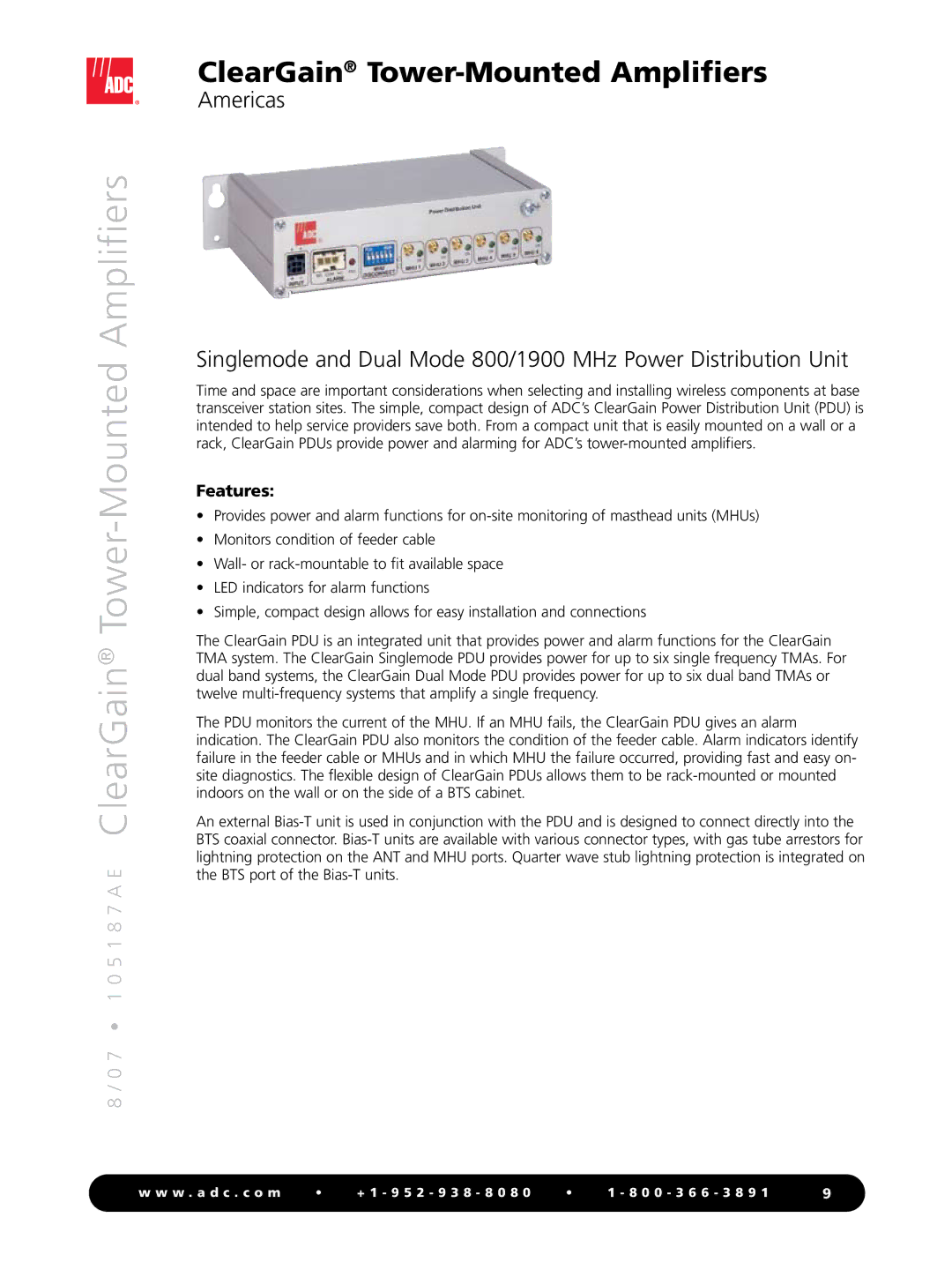Tower-Mounted Amplifiers specifications
ADC Tower-Mounted Amplifiers (TMAs) represent a crucial component in the modern telecommunications landscape, particularly in the enhancement of signal quality across cellular networks. These amplifiers are predominantly used in conjunction with antennas mounted on towers to improve the transmission range and reliability of wireless communications.One of the key features of ADC TMAs is their ability to boost received signals while minimizing interference and noise. This is essential in densely populated areas or locations with challenging topography, where signal degradation is common. By amplifying weak signals, TMAs help ensure high-quality voice and data transmission, which is increasingly important as the demand for mobile data continues to rise.
In terms of technology, ADC TMAs typically employ low-noise amplifier (LNA) technology, which is designed to amplify signals without introducing significant noise. This enhances signal integrity, allowing for more effective communication between the network base stations and user devices. Additionally, many TMAs are built with advanced filtering technologies to selectively enhance desired frequencies while rejecting unwanted signals. This feature is crucial for maintaining the clarity and quality of mobile communications.
ADC TMAs are also characterized by their robust design, often featuring weather-resistant casings that protect against the elements. This is vital as these amplifiers are usually installed in outdoor environments exposed to varying weather conditions. Their ability to withstand extreme temperatures, humidity, and other environmental challenges makes them reliable components of telecommunications infrastructure.
Installation flexibility is another highlight of ADC TMAs. They can be integrated into various tower designs and are compatible with multiple antenna types. This versatility ensures that network operators can implement them in a wide range of deployment scenarios, enhancing their operational efficiency.
Another critical characteristic is the power consumption of these amplifiers. ADC designs often prioritize energy efficiency, which is particularly important given the growing emphasis on sustainability in telecommunications. By reducing the energy footprint of network operations, ADC TMAs not only lower operational costs but also contribute to greener network practices.
In summary, ADC Tower-Mounted Amplifiers are essential for improving signal strength and quality in wireless telecommunications. With advanced technologies such as low-noise amplification and filtering, robust weatherproof designs, installation flexibility, and a focus on energy efficiency, these amplifiers play a pivotal role in supporting the ever-evolving demands of mobile communication networks. Their integration ensures enhanced connectivity, ultimately fostering a more connected society.

